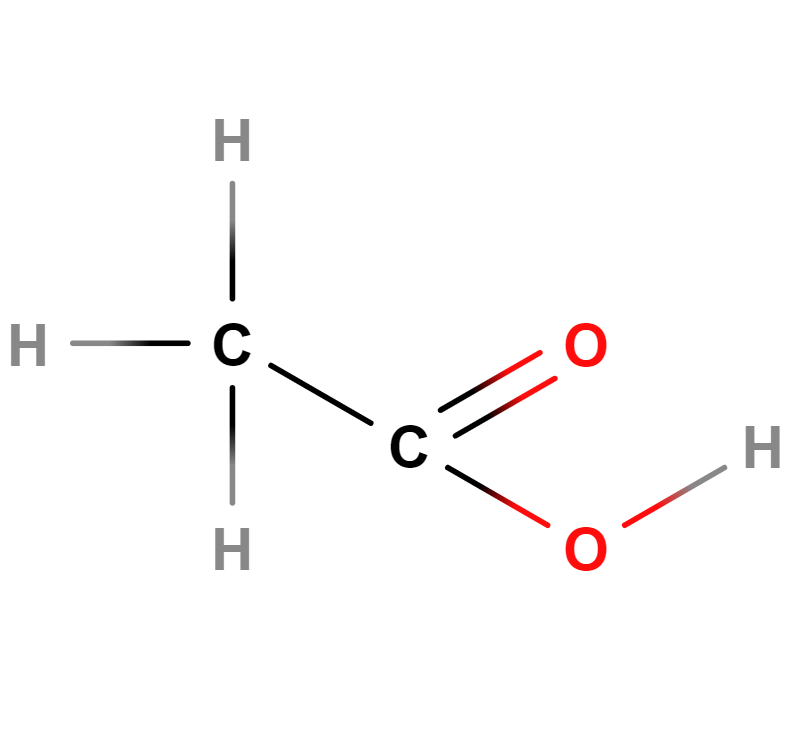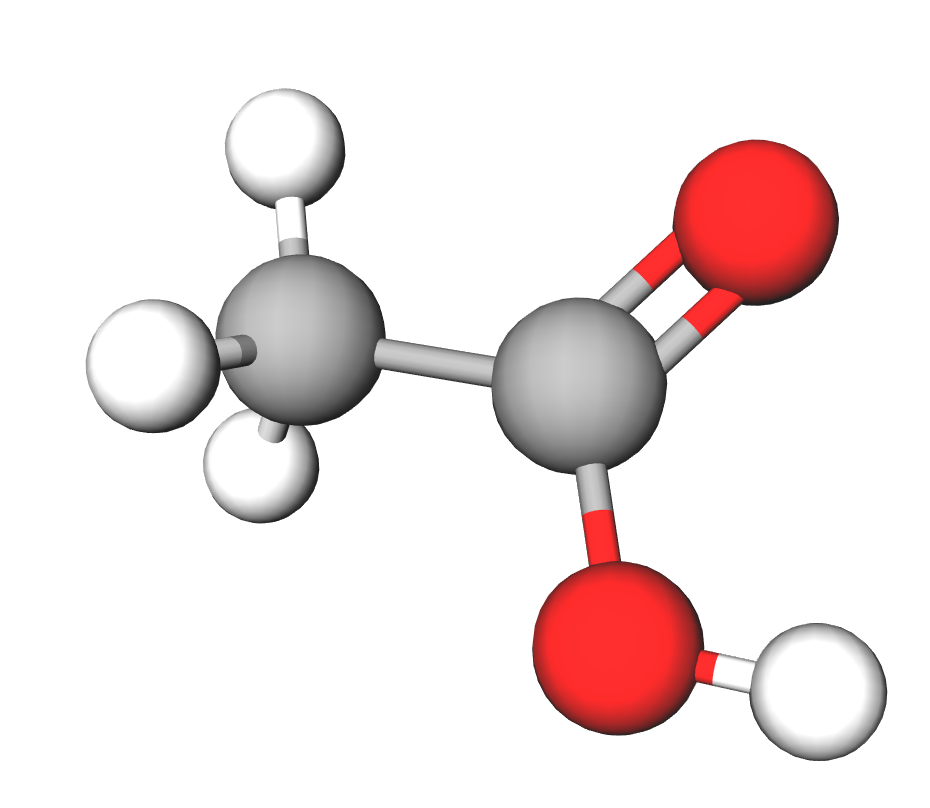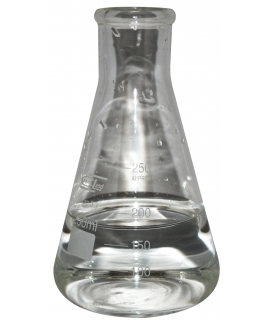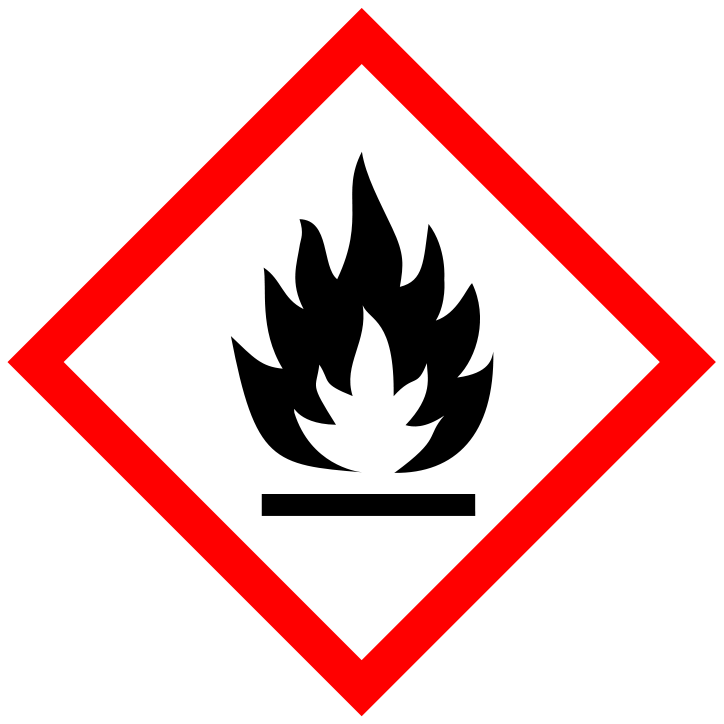ACETIC ACID 99% (GLACIAL, E260 food grade), L
6.99 €
Acetic acid, CAS 64-19-7, ethanoate, INCI ACETIC ACID.
Parameter | Attribute |
Acetic acid | Ethane acid, ethanoate, E260, hydrogen acetate, methanecarboxylic acid, ethylic acid |
Formula | C2H4O2 |
Structure |   |
IUPAC | Ethanoic acid |
INCI | ACETIC ACID |
CAS | 64-19-7 |
Molar mass | 60.052 g/mol |
Density | 1,049g/cm3 (liquid), 1,27g/cm3 (solid) |
Solubility | Miscible with water in any ratio |
Acetic acid is best known for giving vinegar its sour taste and pungent smell. Pure anhydrous acetic acid (glacial acetic acid) is a colorless, hygroscopic liquid which turns into colorless crystals at temperatures below 16,7 °C. Acetic acid is corrosive, its vapors are irritating to the eyes and nasal mucosa, and it causes throat irritation, but it is a relatively weak acid that dissociates easily in aqueous solutions.
In the food industry, acetic acid is used as a preservative and is otherwise known as food additive E260. Acetic acid contains 349 kcal per 100 g. Vinegar used in food is usually at least 4% concentration. Vinegar is most often used directly as a condiment and for preserving vegetables and other foods. In addition, vinegar can react with alkaline ingredients, such as baking soda or baking powder, to produce a gas that helps to make baked goods more fluffy.
In cosmetics, acetic acid is used as a natural pH adjuster to replace mineral acids. It can also be used as a masking agent to suppress the taste and smell of a product. The disadvantage of acetic acid is its specific odor, which is not suitable for all cosmetic or personal care products. Its functions (INCI):
- pH regulator : Stabilizes the pH of cosmetics
- Masking : Reduces or inhibits the odor or basic taste of the product
For the dissolution of organic compounds glacial acetic acid is used as an excellent polar solvent. It is often used as a recrystallisation solvent to clean up organic compounds. Acetic acid is used as a solvent in the production of terephthalic acid (TPA), a raw material for polyethylene terephthalate (PET).
In laboratories and educational institutions, glacial acetic acid is used in analytical chemistry for the evaluation of weakly alkaline substances such as organic amides. Glacial acetic acid is a much weaker base than water, so the amide behaves as a strong base in this medium. It can then be titrated using a very strong acid such as perchloric acid in glacial acetic acid. It is also used in esterification reactions to produce flavorings, e.g. acetic acid reacts with 1-butanol to form a pear-scented ester.
In livestock farming it is used as a feed preservative to inhibit the growth of moulds and some bacteria at levels of 0.1 to 1%, most of the acetic acid used in agriculture is consumed as a preservative, both in animal feed and food for human consumption. For animal feed it is used directly or as an ammonium or sodium salt (ammonium acetate or sodium acetate). As a preservative, acetic acid is relatively cheap and effective against bacterial growth and secondary heating of silage.
Recommendations for silage and their mixtures | |
Dosage 2 - 6 liters/tone | For surface spraying 0.25 liter/m2 |
Recommendations for the preservation of cereals (Whole Grain) | ||
Moisture (%) | Storage up to 6 months (liters/tone) | Storage up to 10 months (liters/tone) |
<14 | 2.0 | 2.5 |
15 | 3.0 | 4.0 |
16 | 4.0 | 5.0 |
17 | 4.5 | 6.0 |
18 | 5.0 | 7.0 |
19 | 6.0 | 8.0 |
20 | 7.0 | 9.5 |
22 | 9.0 | 11.0 |
Recommendations for the preservation of cereals (Crushed cereals) | ||
Moisture (%) | Storage up to 6 months (liters/tone) | Storage up to 10 months (liters/tone) |
<14 | 2.4 | 3.0 |
15 | 3.6 | 4.8 |
16 | 4.8 | 6.0 |
17 | 5.4 | 7.2 |
18 | 6.0 | 8.4 |
19 | 7.2 | 9.6 |
20 | 8.4 | 11.4 |
22 | 10.8 | 13.2 |
In the cleaning industry, acetic acid is used as a descaler or rust remover. Due to its acidic properties, acetic acid is very effective in dissolving lime scale. Acetic acid is also used as a precursor (raw material) in the production of peracetic acid, one of the most effective non-toxic disinfectants. Acetic acid, especially in higher concentrations, is used as a plastic cleaner or light scratching agent for 3D printers.
In medicine, acetic acid is used as an antiseptic against pseudomonas, enterococci, streptococci, staphylococci and others. It is also used for cervical cancer screening and the treatment of infections. In addition, it is used as an agent to lyse red blood cells prior to white blood cell testing. Vinegar is also said to reduce high blood sugar levels.
In beekeeping, acetic acid is used to protect against wax moths. We recommend using dispensers. It is very important not to overdose as it is very easy to cause damage to bees. The acid used evaporates downwards, so the dispenser is placed above the frames.
Important: Add the item to your basket, fill in the recipient's details and confirm your order. Thank you!
To save your precious time, we will deliver your order to your address at a time convenient for You!
*- The pictures of the goods may not correspond to the actual appearance, color, assembly or shape of the goods and their packaging. The information in the product description is of a general nature and may not correspond to the information on the packaging of the product and may not be the exact use of the product. The information given on the stocks and prices of goods may, in certain cases, differ from the actual prices and stocks of goods
**- The product complies with the requirements for food additive E260 but is not intended for use as a food additive.
Signal word: Danger |
Hazard icons:
|
Danger phrases: H226 Flammable liquids and vapors H314 Severely burns skin and damages eyes |
Precautionary statements: P210 Keep away from heat sources, hot surfaces, sparks, naked flames or other sources of ignition. Do not smoke. P241 Use explosion-proof electrical/ventilation/lighting system P260 Do not inhale dust/ fumes/ gases/ mists/ vapors/ aerosols. P280 Wear protective gloves/protective clothing/eye/face protection. P303+P361+P353 IN CASE OF CONTACT WITH SKIN (or hair): Remove all contaminated clothing. Wash skin with water or shower P305+P351+P338 IN EYES: wash gently with water for a few minutes. Remove contact lenses, if present and if easy to do so. Continue to wash eyes. P310 Call the ACCIDENT CONTROL AND INFORMATION OFFICE or seek medical advice immediately. P501 Dispose of contents/container in accordance with local regulations. |
Related products
(8 other products in the same category)












